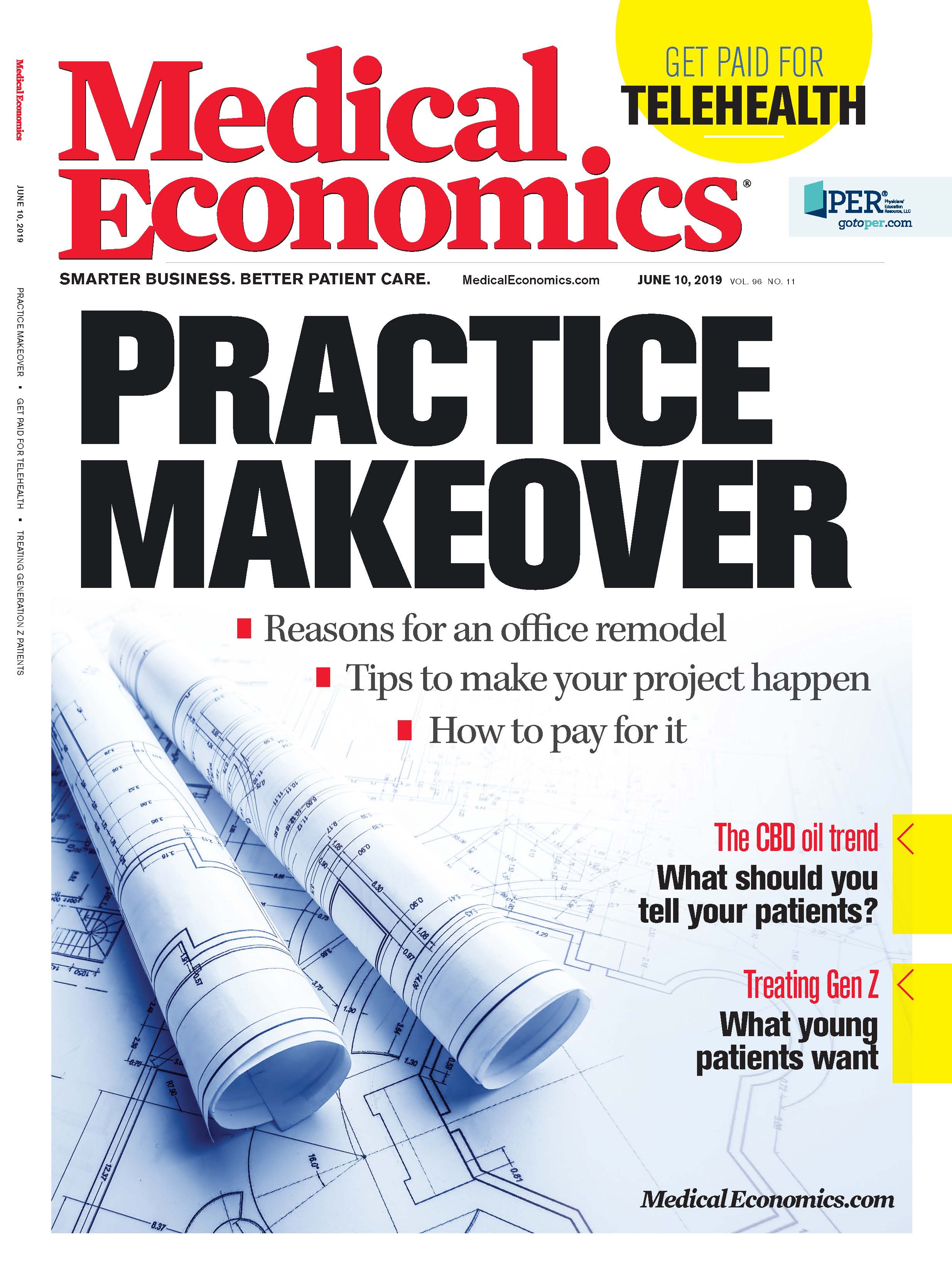Publication
Article
Medical Economics Journal
How to build a practice for younger patients
Author(s):
Millennial and Generation Z patients demand convenience and quicker access, experts say

Millennials (born 1981 to 1996) and Generation Zers (born 1997 to 2012) represent 7 percent of patients in the practice of James Legan, MD, and they also tend to come in for an appointment only once every couple of years. However, this hasn’t deterred the Montana-based internist from devising a strategy to attract and retain these individuals that he hopes will, over time, comprise more of his patient base.
In January, he started using secure texting so patients could ask for prescription refills and request copies of reports, lab results, and office visit summaries. Texting doesn’t require any additional work on his part. His nurse signs patients up for text messages after she takes vital signs, and responds to the messages as they come in.
Legan says patients of all ages-and especially younger generations-tend to prefer texting over phone and email communication. He has seen this in his own practice as well as in his personal life with his 18-year-old son and 16-year-old daughter, both of whom are in Generation Z. “Their phone is their connection to the outside world,” he says. “I hate to say it, but I think email is old technology now. We need to make communication more immediate.”
Nearly 70 percent of Legan’s patients actively use the patient portal that’s tied to his EHR, though he anticipates texting will eventually replace it entirely. He’s also exploring providing secure video chatting to address common medical problems such as a rash or sinus infection. He predicts younger generations will increasingly demand this type of technology as part of their healthcare experience.
According to Accenture’s 2019 digital health consumer survey, convenience is a major factor for younger generations when choosing a provider. For example, 84 percent said they want easy access to test results, and 80 percent want the ability to request prescription refills electronically. This is in addition to the majority of respondents who demand short wait times, responsive providers, and cost-conscious care.
Giving younger generations what they want
Experts say physicians who want to attract and retain younger patients need to rethink how they interact with them and create a technology-driven strategy for engagement.
To do this, physicians must shift their mindset, says Mike Morgan, chief executive officer at Updox, a patient engagement consultant in Dublin, Ohio. “Your practice is a business, and your patients are customers,” he says. “A typical business segments its customers because everyone has different priorities.”
Millennials and Generation Z expect their healthcare experience to mimic that of other industries, says Morgan. Most importantly, they want convenience. They’ll compare healthcare, for example, with the ease of ordering takeout meals online, requesting an Uber or Lyft, or chatting with a company’s customer service rep, he adds. If their healthcare experience isn’t similar in terms of booking appointments, paying bills, and communicating with providers, they’ll simply move on to find a different practice that can provide the type of experience they want.
“Many physicians have built their business based on word of mouth,” says Kaveh Safavi, MD, JD, senior managing director at Accenture, a healthcare consulting and IT company in Chicago. “Now, that’s not enough when convenience is three times more compelling.”
Younger consumers also want the ability to make appointments easily. Legan, for example, tries to accommodate these patients who have acute problems with same-day appointments, when possible. “These patients are hard to capture otherwise,” he says. “If you can’t fit them in, they’ll go to an urgent care.”
Three-quarters (76 percent) of participants in the Accenture study said they want the ability to book, change, or cancel appointments online. “These generations, in general, don’t want to pick up the phone and call,” says Norm Schrager, senior content marketer and strategist at PatientPop, a practice growth technology provider in Santa Monica, Calif.
However, some physicians believe that by offering online booking, they’ll lose control over their schedule. This isn’t true, says Schrager. Many products allow practices to limit scheduling options online. They also fully integrate with EHR scheduling systems, offering a seamless experience for practices, he adds.
Boosting online presence
Standing out among competitors is perhaps the biggest challenge in terms of attracting millennials and Generation Z to a physician’s practice, says Morgan. Having a website is a good first step, but the site must include updated information and provide a decent user experience with high-quality photos of your staff and office. Otherwise, it could actually harm your ability to attract these patients. “Some patients look at the website as a proxy for the experience they will receive at the practice,” he says.
Physicians also need to work with a web designer or marketing company to create a plan for search engine optimization (SEO), the process of ensuring search engines can find a website, says Carrie Liken, head of industry for healthcare at Yext, a digital knowledge management provider in New York City. A savvy web designer or marketing company should also be able to add relevant schema tags to the HTML code on each page of the site. These tags help search engine algorithms prioritize the content for patients searching key terms, she explains.
A practice website should also include a page for frequently asked questions, about various diagnoses and procedures says Schrager. Ask-and then answer-these questions on the site. “This starts to build up the idea that you have a level of authority and relevance,” he says.
Claiming and optimizing a Google business profile is also important, says Schrager. Physicians should go to https://www.google.com/business/, claim their identity, and add specific information about the services they perform. “Not only does this help with search results, it also lets prospective customers know who you are,” he adds.
Paying attention to online reviews
As important as a practice website are the myriad healthcare- and consumer-related websites (e.g., Healthgrades, Vitals, and Yelp) that include reviews and ratings provided by patients, says Liken. Over half (59 percent) of patients say online patient reviews are the most critical online resource they consider when choosing a provider, according to the 2019 patient perspective online reputation survey conducted by PatientPop.
In some cases, these third-party websites are the only ones that prospective patients see, either because the practice doesn’t have a website or the practice website isn’t SEO-optimized and thus doesn’t appear in search results. Another reason is that the patient searches the physician’s name not the practice name. If the website only mentions the practice name, it won’t come up in a search for the physician’s name.
The most important step physicians can take regarding these reviews is to simply acknowledge them, says Liken. However, they should be careful not to confirm or disclose protected health information (PHI) during these interactions. Instead, thank patients for their feedback and ask them to call the practice directly to discuss their concerns, she says.
Schrager agrees. “Let the patient know you heard them and that you want to address the issue they had,” he says. “That will help you not only retain that patient, but it shows a level of care and professionalism that will help attract prospective patients.”
Physicians should feel comfortable asking patients to share their experiences online because these reviews are highly influential in terms of choosing a provider, says Schrager. The more recent the review, the more relevant it is for younger patients-many of whom ignore reviews older than three months, he adds.
Many of these third-party sites also include basic information about a practice, such as the address and phone number. Nearly 70 percent of the time, this information is either inaccurate or missing, says Liken. “This leads to a really bad patient experience,” she adds. “When younger generations find information that’s not accurate, or they can’t find the right number, they just go ahead and search for another doctor altogether.” She says physicians should claim and update their profiles on these sites.
Rethinking the patient experience
Once they arrive for an appointment, millennials and Generation Z expect to be treated as customers of your business. As such, they’ll appreciate a warm greeting upon check-in, says Schrager. Practices should also offer amenities such as Wi-Fi, coffee, water, TVs, comfortable chairs, and updated magazines. If the physician is behind schedule, staff should let them know they’ll experience a delay and by how long.
“This level of open communication makes such an impression,” he adds.
Younger generations definitely don’t want to be inundated with paperwork once they arrive, says Schrager. Paperless intakes that patients can complete in advance using their mobile device are preferred, he adds.
Once patients are in the exam room, Legan projects the EHR onto a 40-inch screen so people can view their health data trends over time. “These generations are very visual, and they like that effect,” he says.
Upon checkout, they’ll want to know what specific costs they’ve incurred as well as instructions for next steps (e.g., tests or referrals), says Morgan. They also want the ability to communicate with physicians asynchronously through texting. The only caveat with texting is that physicians and staff must use secure texts if they intend to exchange PHI, he adds. In addition to encryption, secure text messaging offers other safeguards, such as accessing a conversation through a link that’s only active for 48 hours. If a patient wants to reactivate the conversation after 48 hours, they must verify their identity using their date of birth or a personal identification number.
Thinking about long-term return on investment
Engaging millennials and Generation Z isn’t necessarily about generating revenue-at least not initially, says Safavi. It’s about building relationships and being accessible so patients automatically reach out when needs do arise. “Your goal is to think about having these patients think of you as their doctor,” he adds. The idea is that over time, their healthcare needs will evolve and increase as they age.
On the other hand, embracing healthcare consumerism undoubtedly improves patient satisfaction and retention across the board for all generations, says Safavi. “It’s about realizing this is what patients expect now,” he adds.






